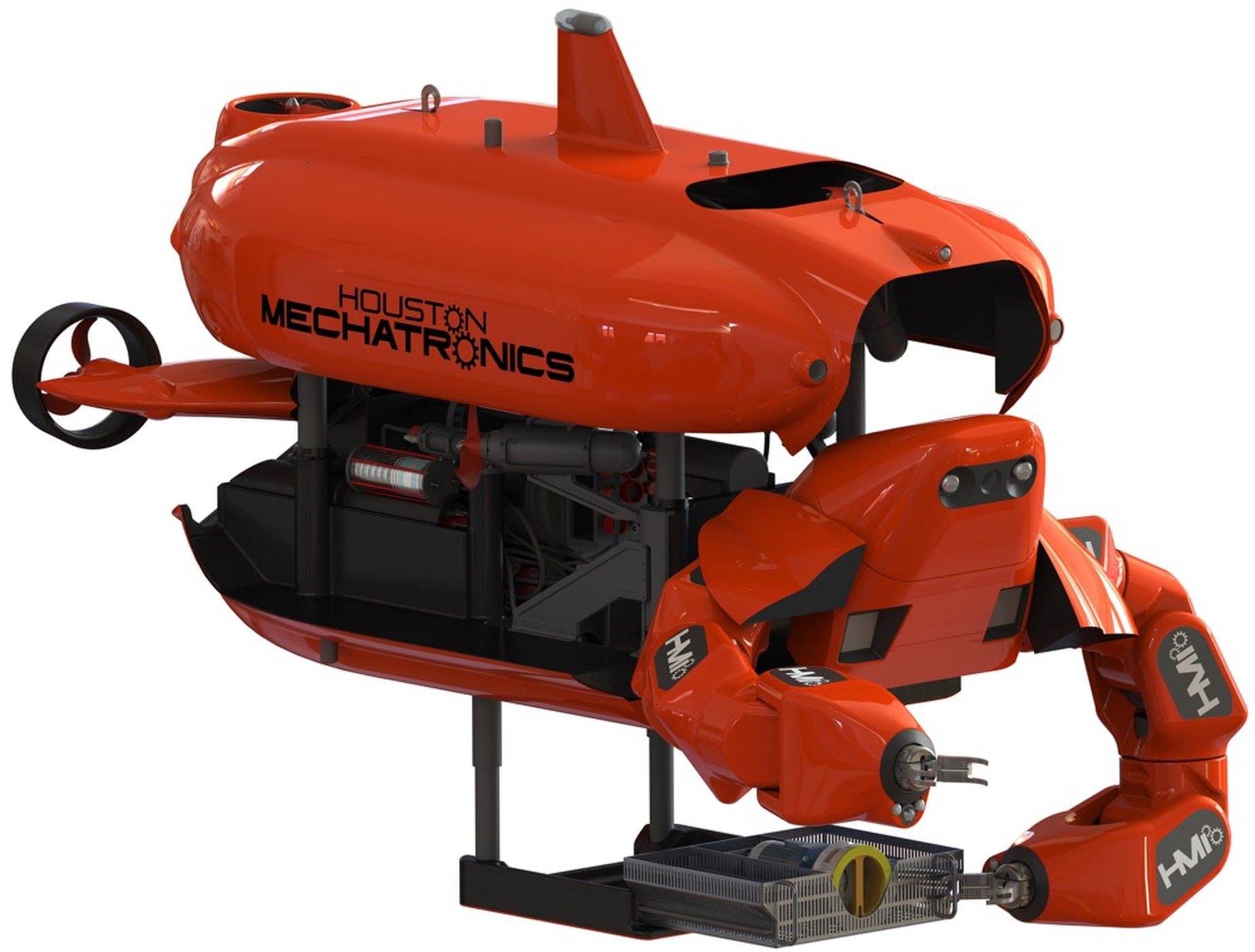A new underwater transformer has been developed that may be able to improve the efficiency of the oil industry and military.
Houston Mechatronics is a small company led by a team of former NASA robot engineers, and they just announced a major step forward towards building an underwater transformer known as “Aquanaut.” This 2315-pound unmanned underwater vehicle will be able to transform itself to operate in two different modes – a submarine-shaped autonomous underwater vehicle mode and an unfolded two-armed remotely operated vehicle mode for work.
Houston Mechatronics spokesperson Sean Haplin told, “When Aquanaut moves through the water, we want as little drag as possible to extend the maximum range of what the vehicle can do on battery power…By enclosing the limbs, we’re able to operate the vehicle over great distances, up to 200 kilometers.”
One of the biggest ways in which the underwater transformer is helpful is that it has long arms and a long range. The long arms are a large part of the Aquanauts length – actually measuring 9 feet and 6 inches in AUV mode and 11 feet 6 inches in ROV mode.
These arms are also designed with dexterity in mind – lending it the ability to accomplish any sort of task you throw at it. While the arms are only a small part of the overall design, they were the most difficult to get right – and this recent breakthrough leads us one step closer to a commercial underwater transformer that may be able to make the tasks in a number of industries significantly easier.
The goal of Houston Mechanics with the creation of the underwater transformer was “elegance,” as the team did their best to come up with a design that was both fully transformable and highly functional in ROV mode while using very few parts. “As you can imagine, things that move may break,” said Haplin.” “Now, if you see the Transformers in the Michael Bay movies they have a million little parts that are moving when they transform. That would not be how a normal robot would do it.”
It’s obviously important that the underwater transformer be able to transform seamlessly, but the second main consideration with the design of the robot was intelligence. The Aquanaut had to be able to function miles away from home base, with a connection speed that could be just a “fraction of dial-up.”
With such a little amount of data being transferred at incredibly low speeds, it has to be possible for the underwater transformer to be able to make most of the decision-making on its own. The Aquanaut is actually designed to inspect itself for any form of damage, as well as with the capability to make fine motor adjustments under its own guidance – making controlling the robot much easier than it would be without these features.
The Aquanaut is being funded mostly with the assistance of the Defense Department and the oil industry – two fields that would definitely benefit from an underwater transformer with intelligence and an elegant design. Haplin told LiveScience that the first fully-assembled underwater “tank test” will occur in the next few months, with marketing to individual clients starting in 2019.
[SOURCE]




